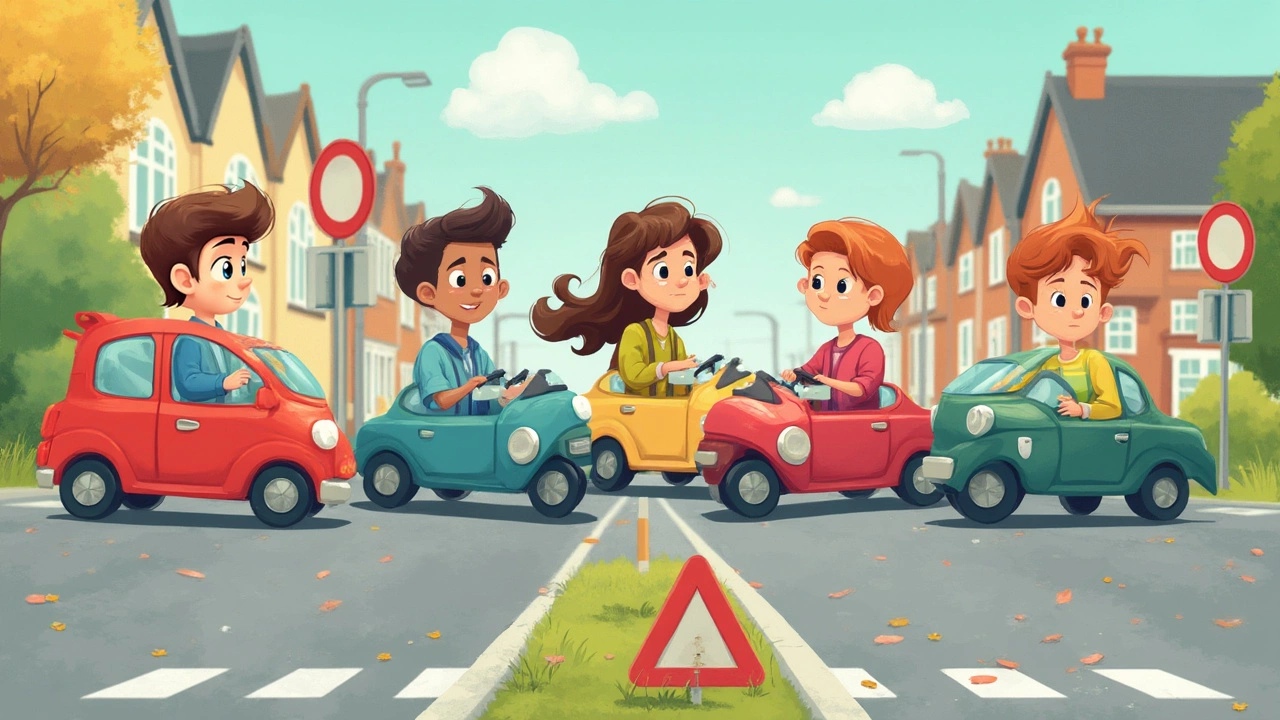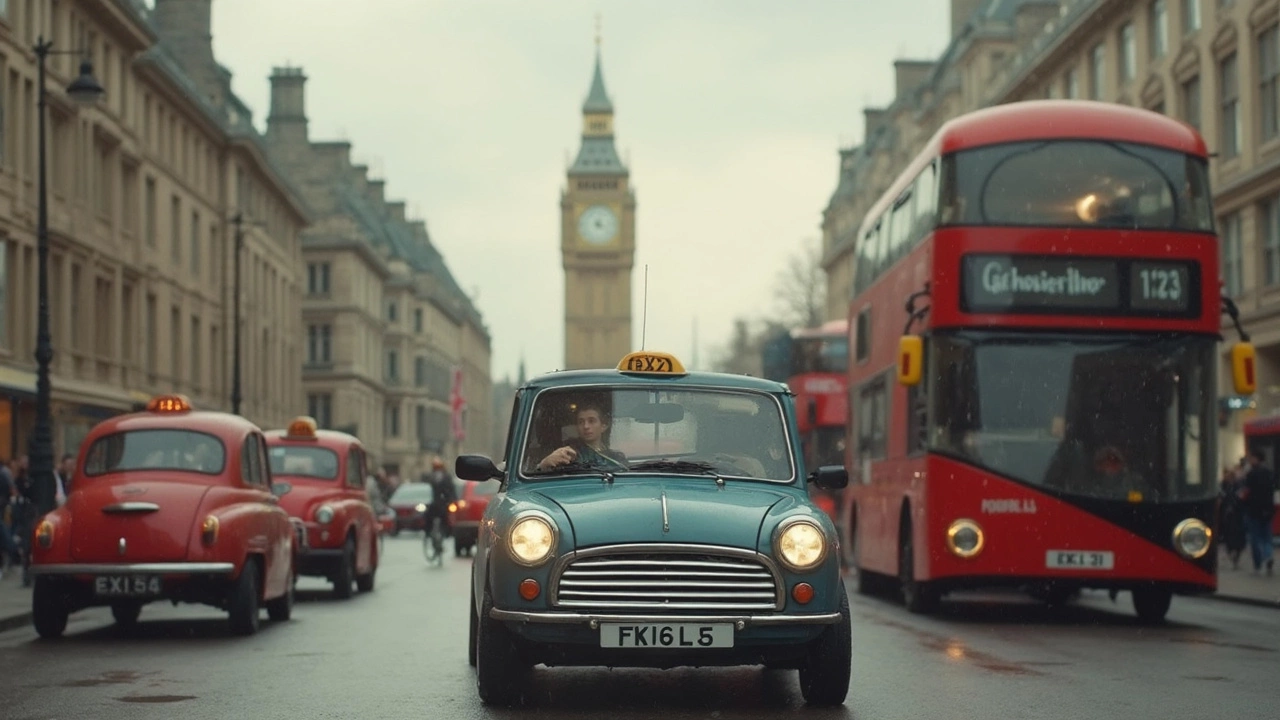Driving tests can be nerve-wracking, right? One thing on everyone's mind is, 'How many minors can I make and still pass?'. You're not alone. Most places allow for a few minor mistakes during the test. For instance, in many regions, you can make about 15 minor faults. Sounds like a lot? Maybe, but it can add up quicker than you'd think.
Now, what's a minor fault, you ask? It's often a small error that doesn't pose a danger to you or other road users. Think of forgetting to check the mirrors once or not signaling early enough. These aren't deal-breakers like running a red light but can impact your test if they pile up. Staying aware of the common minor faults can help you dodge unnecessary errors.
- Understanding Minor Faults
- How Many Minors Are Too Many?
- Common Minor Faults
- Tips for Reducing Minors
- The Role of the Examiner
- Preparing for Success
Understanding Minor Faults
Alright, so what exactly are these minor faults on your driving test that everyone's always talking about? Think of them as small hiccups in your driving performance, but not critical enough to fail you outright. They’re little things you might not even realize you're doing, like those annoying habits you didn't know you picked up.
Here's how it typically works. Minor faults are errors that don't create dangerous situations. Say you hesitate for just a tad too long at a stop sign or don't perfectly align your car during a parallel park - these might count as a minor. They don't cause immediate harm, but they're not perfect either.
Common Examples of Minor Faults
Knowing what constitutes a minor fault can help a lot. Here are some issues that commonly crop up:
- Mirrors: Forgetting to check them at key moments.
- Judging gaps poorly: Like when merging into traffic.
- Road positioning: Not always staying perfectly centered in your lane.
- Speed: Driving a bit too slow for the conditions, not just too fast.
Keep in mind that different regions might have specific rules about these minor faults. It's worth checking what applies in your area to be fully prepared.
How Examiners View Minors
Your examiner doesn't expect robotic perfection. They're looking for smooth, competent driving. So, a single minor here or there usually isn't a cause for panic. Accumulating too many, however, might signal a pattern of sloppiness, which is where it becomes a problem.
Remember, it's crucial to maintain calm and focus, avoiding those minor faults where possible and maximizing your chances of passing your driving test.
Fascinating Stats on Minors
Did you know that the average number of minor faults for a passing candidate is often around 9-10? These small mistakes show up most often in busy or high-pressure parts of tests.
| Average Minors | Typical Passing Score |
|---|---|
| 9 | Pass |
| 16+ | Fail |
How Many Minors Are Too Many?
If you're aiming to pass your driving test, understanding the limits on minors is essential. You're usually allowed up to 15 minor faults, but there's no fixed number everywhere. Some regions might have stricter or more lenient rules. Always check with your local driving authority to know what's expected.
Yet, it's not just about counting to 15. The key is where those minor errors fall. If they're sprinkled across different parts of the test, you might be okay. But if they stack up in one area, say nearing pedestrians or handling intersections, it may indicate a recurring problem you need to work on.
When Minors Become Majors
Sometimes, a bunch of small mistakes can turn into a larger issue in the examiner's eyes. Even if individually they're minor, patterns can suggest you're not quite ready for the road. For example, if you consistently forget to check your mirrors, it could snowball into a major concern.
Also, keep this in mind: Some faults are worse than others. Forgetting a mirror check is minor, but not spotting a pedestrian could escalate quickly.
Finding a Balance
Striking the right balance between cautious and confident driving is crucial. Too cautious, and you might hesitate at a roundabout. Too confident, and you might miss safety checks. The sweet spot varies by examiner but aiming for smooth, observant driving generally puts you in good shape.
Common Minor Faults
When you're gearing up for your driving test, it's super useful to know what minor faults are common. This way, you can keep an eye out for them and improve your chances of passing. Let's break down a few of these to make sure you’re not caught by surprise.
Mirror, Signal, Manoeuver
This is a fundamental routine you need to get right. One of the most common minor faults is not checking the mirrors correctly or in the right order. It seems simple, but you’d be amazed how easy it is to forget when you're under pressure. Train yourself to quickly scan your mirrors before any move.
Signal Timing
Signaling too late or forgetting to signal at all can be a minor fault. The key is to communicate your intentions early to other road users. Leave enough time for them to understand your next move.
Positioning and Lane Discipline
Another minor fault is poor lane discipline. This means not keeping in your lane properly or not positioning the car correctly on the road. Make sure you’re centered in your lane and keep an eye on lines, especially during turns.
Speed Control
Speeding isn't just about going over the limit; it's also about driving too slowly or not adjusting speed in different conditions. Make sure to adapt your speed to the flow of traffic and weather conditions.
Here's a rough idea of how common some of these minor faults are from a recent survey of new drivers:
| Type of Minor Fault | Percentage of New Drivers |
|---|---|
| Mirror, Signal, Manoeuvre | 45% |
| Signal Timing | 30% |
| Positioning and Lane Discipline | 50% |
| Speed Control | 35% |
So, before your driving test, take some time to polish these areas. Practice makes perfect, and knowing these common pitfalls can make a huge difference. Remember, the more you practice, the easier it gets to avoid these minor slips.

Tips for Reducing Minors
When it comes to acing your driving test and keeping those minors in check, a little preparation goes a long way. Curious about how to avoid stacking up minor faults? Let’s dive into some practical tips that might just save the day.
Practice Makes Perfect
Consistent practice is your best friend. Spend ample time behind the wheel with a supervisor who can point out areas where minors often occur. Focus on the basics: proper signaling, mirror checks, and maintaining a safe distance from other cars. Practice in different conditions, like driving in city traffic or dealing with tight parking situations.
Know the Common Culprits
Be aware of the common minor faults. These often include things like incorrect lane choices, hesitating too much, or misjudging the speed for different road types. Make a list of checklist items for your practice sessions to ensure you're not missing any detail.
Stay Centered
Many candidates make the mistake of hugging the curb or straying too far into the middle of the road. Keep your car centered in the lane to avoid these subtle errors. Being mindful here can prevent unnecessary minors.
Calm Your Nerves
Nervousness can make you more prone to minor slips. On the day of your test, aim to be relaxed. Take deep breaths, and if it helps, visualize yourself successfully completing each aspect of the test. Remember, minor mistakes happen, and they're not the end of the world.
Stay Informed
Familiarize yourself with the latest version of the driving test criteria. Requirements can change, and what's considered a minor fault now might have been different years back. It’s crucial to be up-to-date so that you're not caught off guard on test day.
By embracing these strategies, you can confidently take your test knowing you’ve minimized your chances of making those pesky minor faults. Keep practicing, stay focused, and drive safe!
The Role of the Examiner
When you're sitting in the driver's seat during the test, the examiner is there not just to judge but to make sure you're safe on the road. They keep an eye out for how well you control the vehicle, obey traffic rules, and handle different traffic situations.
So, what exactly do these guys do? First off, the examiner assesses your minors on the driving test. They note down any small mistakes you make, checking if they repeat. Occasional slip-ups might be okay, but consistency in errors can raise a red flag.
Examiners are also trained to stay impartial. They have specific criteria to follow, ensuring everyone gets a fair shot, no matter who's taking the test. But they're humans too. If you're clearly nervous, a lot of them understand and won't drop the hammer on the first tiny mistake you make.
What They're Looking For
While checking off their list, examiners focus on:
- Understanding of road signs and signals
- Control over the car, especially in tricky situations
- Awareness of surroundings and interaction with traffic
- Consistent use of mirrors and indicators
They’re there to ensure you're not just following the rules, but you can handle driving among others safely.
Stats to Ease Your Nerves
If you're feeling the weight of this test, know that a lot of candidates have been where you are. A study showed that around 60% of learners pass their driving test on the first try. It shows if you pay attention to what's tested, you have a good shot at succeeding.
Preparing for Success
Getting ready for your driving test isn't just about knowing the rules of the road. It's about being calm and collected when you take the test. Here are some handy tips to keep stress at bay and ace your test day.
Know the Test Route
Familiarize yourself with potential test routes your local testing center might use. It’s not about memorizing the roads but about getting comfortable with them. Spend some time driving around the area with a friend or instructor to build confidence.
Practice Under Test Conditions
Try to simulate the test environment as closely as possible during your practice. That means following test length, obeying advance instructions, and using the same car you’ll use during your actual test if possible.
Common Minor Faults Drill
Focus on common minor faults like mirror checks, signaling, and smooth gear changes. Put extra effort into practicing these areas, as they're where many candidates slip up. It might not seem huge, but these small details matter.
Get Plenty of Rest
Your mind needs to be sharp. Sleep is your best friend here. Avoid cramming last-minute tips the night before. Instead, ensure you’re well-rested to keep nerves in check on test day.
On the Day
- Eat a light meal—don’t drive on an empty stomach or feel too full.
- Arrive early to avoid any last-minute dash.
- Bring essential documents like your provisional license.
- Stay positive! A smile and a calm demeanor go a long way.
By following these steps, you're not just ready but truly set for success when it comes to passing your driving test with fewer minors. Remember, every driver was once in your shoes, so give it your best shot!

